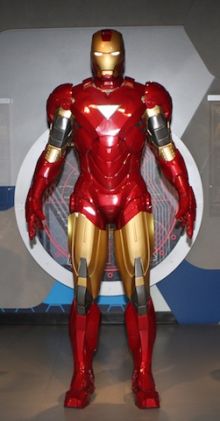Introduction

It should be here by now. Advances in technology manifested in the form of touch screens, voice recognition, and holograms were once just dreams within the realm of science fiction not too long ago. Just a century ago, space travel was considered unfathomable, a concept strictly restricted to comic books and movies. However, forty years ago, something happened that epitomized the huge leap of progress that technology the world has made over the years: we sent a man to the moon. While this feat of engineering is mind boggling, the development of the jetpack pales in comparison. Amidst the whirlwind of breakthrough technologies, the advancement of the jetpack has been relatively stagnant. Although its purpose may not be as tangible as some of the aforementioned inventions, if perfected, the jetpack could have numerous applications transportation, recreation, and in the military. As inventors attempt to engineer personal flying machines, the jetpack’s history resembles that of the airplane—only without the Wright brothers. Despite some modest progress, nothing has embodied the sustained, unrestricted flight of characters such as Star Wars’ Boba Fett or Iron Man (see Fig. 1).
History

Also referred to as the “rocket pack”, “rocket belt”, or “jet vest”, the jetpack reached a milestone in the late 1940s when engineers at a military base in Alabama began researching rockets that could lift a person and allow him or her to land safely upright. In 1959, the US Army contracted Bell Aerosystems to create a “small rocket lift device” for “light mobility systems missions”. The machine utilized motorcycle-type rotating grips for throttle and was powered by hydrogen peroxide. Eventually called the Bell Rocket Belt, its breakthrough came in 1961 when pilot Harold Graham flew for thirteen seconds [2, 3].
During the mid-60s, the Bell Rocket Belt gained significant exposure as Sean Connery wore one in his blockbuster James Bond film, Thunderball (1965) [3]. Some organizations and individuals continued to spend time and money on its research, including Bill Suitor, who did stunt work as James Bond. Suitor eventually became known for perhaps the most memorable jetpack flight in history, when he flew the rocket belt for seventeen seconds inside the LA Coliseum at the opening ceremonies of the 1984 Olympics. Two and a half billion television viewers from around the globe watched him soar across the field. It appeared that the jetpack had finally arrived, with the Bell Rocket Belt as the primary design [1].
Early “Jet” Pack

The image on the left in Fig. 3 looks futuristic and complex, but its functioning principle is quite simple. The three tanks are standard on a Bell Rocket Belt. Labeled number one in the diagram on the right, the center tank is filled with pressurized nitrogen gas. The outside tanks (number two) are full of hydrogen peroxide. When triggered, the nitrogen pushes the hydrogen peroxide through two pipes and into a chamber (number three) filled with a catalyst, typically made of silver. This catalytic reaction violently decomposes the hydrogen peroxide into superheated steam and oxygen. The hot, high-pressure gas is split through a valve and shoots out two nozzles, generating a thrust with gas velocity at about 1000 meters per second [4].
This technology dominated the world of jetpacks for over three decades, and some inventors still use it today. Since the chemical reaction is so reliable, it allows engineers to focus on meticulous issues like altering the sensitivity of the nozzles to balance thrust and yaw, or side to side movement. But despite the allure of hydrogen peroxide rockets, progress has literally and figuratively hit a ceiling. Although it can “accelerate faster than a Formula 1 car”, the Bell Rocket Belt and its variations have yet to fly for over a minute. This is unlikely to change because the additional weight of larger gas tanks negates the upward lift. And in over forty years of development, it is still difficult to fly and requires a lightweight pilot [5, 6]. With these limitations and diminished funding, the rocket belt has been forced into obscurity. Jetpack enthusiasts must have faith that innovation will save their dreams.

Latest but not Greatest Attempts

Figure 5 illustrates the Jetlev’s operation and although it looks thrilling, it has not solved the world’s jetpack problems. For instance, to actually own such a toy would run you about $100,000. This is discouraging when considering its inability to reach ten yards above the water, let alone the ground. The Jetlev is quite an engineering achievement but cannot provide the freedom of flight essential to a jetpack.

The Martin Jetpack has many promising features, including a potential flight time of thirty minutes and speed of sixty miles per hour. Granted that this may be the best piece of jetpack technology available today, it still falls short in other respects. The Martin Jetpack joins the Jetlev for having a $100,000 price tag (keep in mind that Rossy’s design isn’t for sale). In addition, a two-week training session is required before flight [10]. With mediocre control over lateral movement, this jetpack fails with the rest of its contemporaries.
Disappointment
Another glaring setback with current jetpack technology is that it fails to truly capture the desired freedom of movement. The Rocket Belt and Martin Jetpack lack the ability to quickly accelerate in the horizontal direction; Rossy’s jet wings cannot take off and land vertically; and the Jetlev is permanently attached to a water hose. Nick Sagan (son of famous scientist Carl Sagan), writes, “I think that’s a shame because there’s something really exciting about the possibility of going wherever you want with your jet pack. It’s the ultimate expression of control over our dominion” [2].
The problem with increased mobility is that it often entails navigational issues. This has plagued jetpack inventors since the original Bell Rocket Belt. Bill Suitor once compared the act of flying like “trying to stand on a beach ball in a swimming pool” [5]. Furthermore, most designs of today cite a weight limit for pilots (around 175 pounds) [2]. Factor in safety issues due to midair malfunctions and burns from exhaust, and the concept of a practical jetpack seems to fade away.
References
-
- [1] M. Montandon, Jetpack Dreams . New York: Da Capo Press, 2008.
- [2] L. Greenemeier, “The Trouble with Rocket Packs,” Scientific American , Apr 29, 2008.
- [3] J. Wise, “Jetpack at Last,” Popular Mechanics, pp. 64, Dec 2011: Gale Cengage.
- [4] E. Bengtsson. (2009, Sep 27). “How do Hydrogen Peroxide Rockets Work?”, Peroxide Propulsion [Online]. Available: http://www.peroxidepropulsion.com
- [5] D. Irvine. (2007, Feb 19). “Where’s My Jetpack?”, CNN [Online]. Available: http://edition.cnn.com
- [6] Unknown. (2012, Apr 17). “Personal Flying Jetpack Machine”, Mechanical Engineering [Online]. Available: http://www.mechanicalengineeringblog.com
- [7] G. Stewart, “Yves Rossy, the Swiss Adventurer,” The Times , pp. 120, Nov 28, 2009. Gale Cengage.
- [8] “Jetman Over the Grand Canyon,” Aviation History , vol. 22, no. 1, pp. 8, Sep 2011. ProQuest.
- [9] A. Sanghavi, “How Does a Jet Engine Work?,” The Times of India , pp. 2, Dec 14, 1958. ProQuest Historical Newspapers.
- [10] G. Mone, ” Finally, the Jetpack Flies,” Popular Science , vol. 279, no. 3, pp. 32, Sep 2011: ProQuest.
- [11] J. Schwartz, ” From Comics to James Bond to a Liftoff in the Backyard,” New York Times , pp. A13, Jul 29, 2008. ProQuest Historical Newspapers.



